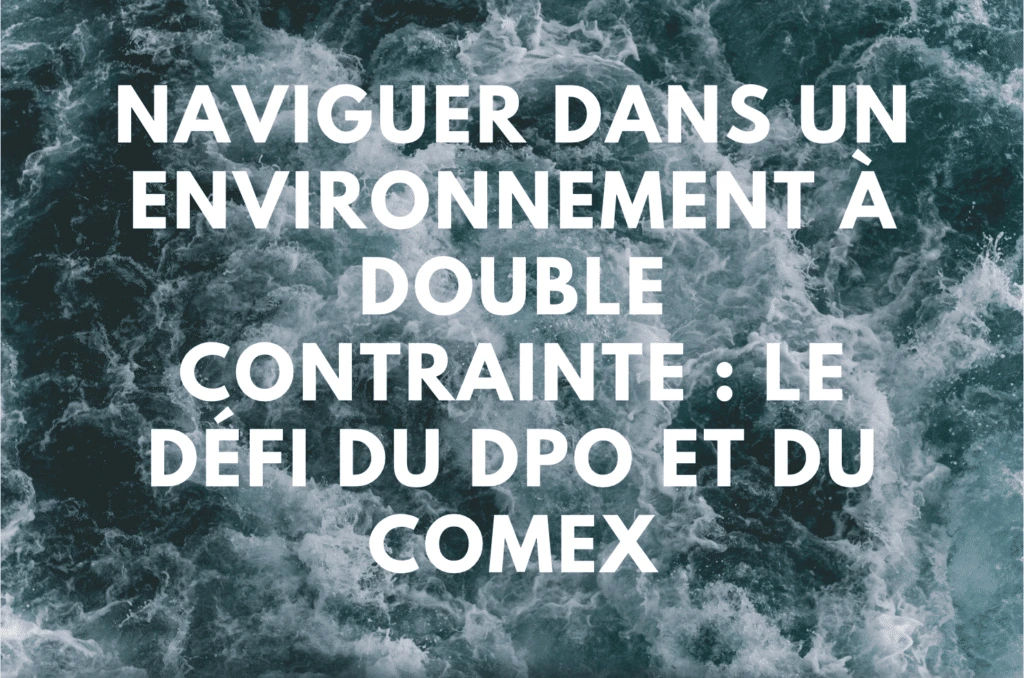In the complex landscape of personal data protection, the role of the Data Protection Officer (DPO) and the Executive Committee (Comex) is crucial. However, it is sometimes the case that these two actors face divergent objectives and priorities. It is in this dual constraint environment that the DPO and the Comex must find a balance between legal compliance and business imperatives.
The role of the DPO
The DPO is the guardian of compliance in personal data protection within the company. Their role is to ensure that the company adheres to the principles of collecting, processing, and storing data in accordance with current regulations, such as the General Data Protection Regulation (GDPR) in Europe.
To ensure this compliance, the DPO must be independent and have sufficient authority within the organization. They must assess risks related to data protection, develop internal policies and procedures, raise awareness among employees and stakeholders, and act as a point of contact for data protection authorities.
The regulation covers all elements related to the safeguarding of fundamental rights and freedoms in the context of the processing of personal data . It applies generally, providing protections where specific obligations are not already detailed in other policies such as the EU Directive on privacy and electronic communications.
This includes the responsibility of entities responsible for data management and the rights of individuals . By encompassing both these responsibilities and rights, the regulation aims to create a comprehensive framework for privacy and data protection, not limited by more targeted directives.
Its scope is designed to ensure that any gaps not directly addressed elsewhere still fall under a protective, regulatory umbrella , securing both personal privacy and data integrity.
The challenges of the DPO in a dual constraint environment
In a dual constraint environment, the DPO faces several challenges. First, they must resist commercial pressures that could compromise the company’s legal compliance. This may include requests for excessive data collection, demands to share data with unauthorized third parties, or projects that may violate individuals’ privacy.
Second, the DPO must address communication and collaboration difficulties with the Comex. They may encounter a lack of understanding or interest from commercial decision-makers concerning data protection issues. It is essential for the DPO to develop communication skills to raise awareness among the Comex about the risks and legal responsibilities.
Strategies for an effective DPO in a dual constraint environment
To successfully navigate a dual constraint environment, the DPO can adopt several strategies. First, they must establish a culture of data protection within the company. This involves regularly training and raising awareness among employees about data protection, emphasizing the importance of legal compliance.
Second, the DPO must develop a relationship of trust and collaboration with the Comex. This can be achieved by providing clear and precise information about legal obligations and the risks related to data protection. The DPO must also stay informed about the company’s business objectives and propose solutions that reconcile compliance with commercial imperatives.
Furthermore, the DPO can play a key role in integrating data protection by design (Privacy by Design) in new products, services, and processes. By working closely with development teams, the DPO can help identify potential risks related to data protection and implement appropriate protective measures.
The challenges of the Comex in a dual constraint environment
The Comex is responsible for the company’s overall strategy and achieving business goals. However, in a dual constraint environment, they may face challenges when it comes to reconciling business imperatives with data protection requirements.
The Comex may feel pressure to collect and process more data to better understand customers, improve products or services, and maximize business opportunities. However, these initiatives may conflict with the principles of data minimization and purpose limitation established by data protection legislation.
The role of the Comex in a dual constraint environment
To succeed in a dual constraint environment, the Comex must recognize the importance of data protection and integrate these considerations into its overall strategy. They must understand the risks and potential consequences of non-compliance, both legally and in terms of the company’s reputation.
The Comex must actively support the DPO’s data protection initiatives by providing necessary resources and committing to comply with established policies and procedures. Regular and transparent communication between the DPO and the Comex is essential to identify potential conflicts and find balanced solutions.
Navigating a dual constraint environment for both the DPO and the Comex can be a complex challenge, but it is not insurmountable. By establishing a culture of respect for data protection, developing a relationship of trust and collaboration, and integrating data protection by design into business initiatives, the DPO and the Comex can find a balance between legal compliance and business imperatives.
The key lies in open communication, mutual understanding, and seeking creative solutions that respect both individuals’ rights and the company’s goals. By working together, the DPO and the Comex can build a solid and privacy-respecting company while promoting growth and business success.





